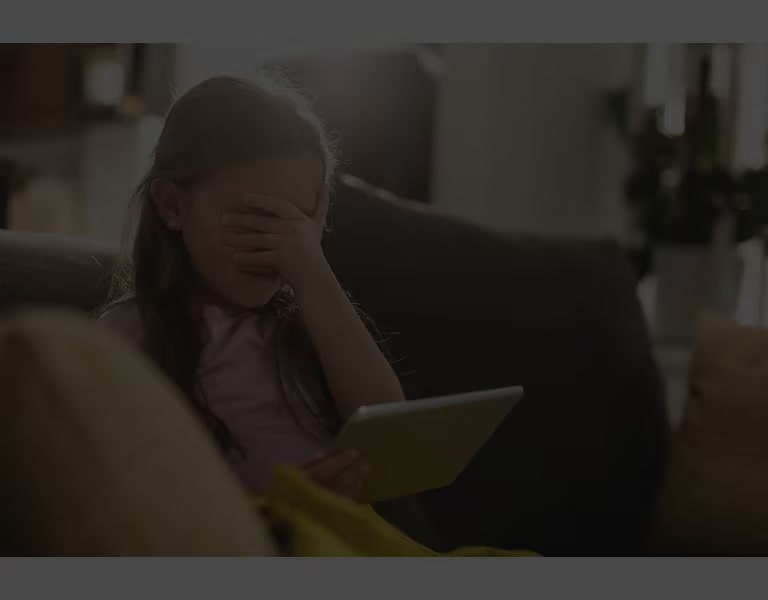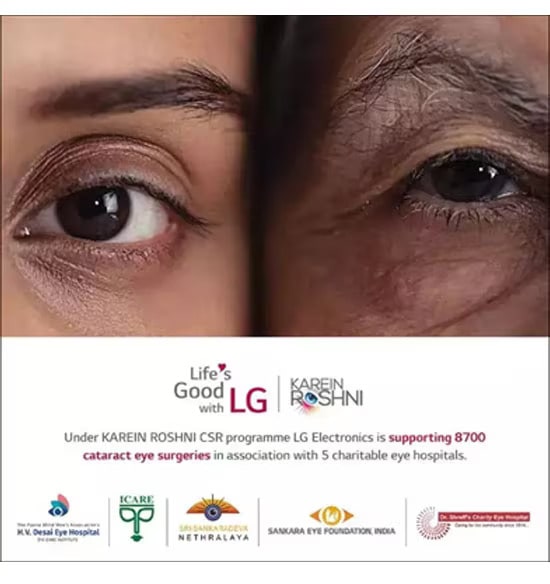We use cookies, including cookies from third parties, to enhance your user experience and the effectiveness of our marketing activities. These cookies are performance, analytics and advertising cookies, please see our Privacy and Cookie policy for further information. If you agree to all of our cookies select “Accept all” or select “Cookie Settings” to see which cookies we use and choose which ones you would like to accept.
Synopsis
LG Electronics India believes in this, and their CSR initiative ‘Karein Roshni’- Light For Every Sight is an initiative in this direction. The programme supports 8700 cataract eye surgeries across India through 5 charitable hospitals, including Dr. Shroff's Charity Eye Hospital.
Increased screen time has become a major concern with regards to healthy vision during recent years, as prolonged use of digital devices can lead to a variety of eye problems in children. The reliance on devices for education and entertainment is a part of the 'new normal' among young people, and this can be attributed to the pandemic. As children spend more time tethered to screens, there is an increasing concern about potential harm to their visual development. There’s also a rising concern regarding the physical, cognitive, and socio-emotional development of children as longer duration of screen-time often means lesser time spent doing outdoor activities.
Eye problems caused by excessive screen time:
∘ Digital eye strain:
Staring at screens for long periods of time can cause eye strain, which is characterized by symptoms such as dry eyes, headaches, blurred vision, and neck and shoulder pain.
When using a screen, we tend to blink less, causing the eye surface to dry out. Children who spend more time on their smartphones are more likely to have dry eyes, which can cause blurry vision and discomfort.
If your child is glued to digital devices, eyes may become fatigued due to strain on eye muscles. Other symptoms of eye strain to look out for in your child include headaches, blurred or double vision, and light sensitivity.
∘ Myopia:
Several studies have published that children who spent more time on screens during the COVID-19 pandemic had a higher risk of developing myopia. Evidence suggests that excessive screen time during childhood may increase the risk of myopia (near-sightedness). Children who spend more time indoors and on screens are likely to spend less time outdoors, associated with a lower risk of myopia.
∘ Blue light:
Digital screens emit blue light, contributing to digital eye strain and disrupting sleep.
Good eye habits
Most parents can't and don't want to, altogether remove screened devices from their children's lives. They're part of living in the modern world. You can best protect your child's eyes by teaching them healthy screen time habits.
∘ Encourage children to take breaks from screens every 20 minutes and limit screen time to no more than two hours of recreation time per day.
∘ The 20/20 rule. During any concentrated visual task, encourage your child to take a break every 20 minutes, and focus on something at least 20 feet away for 20 seconds. This allows the eyes to relax and return to their natural position and baseline settings. (Adults should use this trick too!).
∘ Adjust screen distance and position. The screen should be slightly below their eye level, as looking up at screens widens the eyes and dries them out quicker. Another guide for screen distance is the 1-2-10 rule. This says that mobile phones should ideally be one foot away, laptops and computer screens should be two feet away, and televisions should be 10 feet away. This would allow your child's eyes to focus properly on screens at the correct distance.
∘ Adjust the brightness and contrast settings on screens to reduce eye strain, and use a blue light filter to reduce exposure to blue light.
∘ Encourage children to spend more time outdoors, as studies suggest that outdoor time may help reduce the risk of myopia.
∘ Schedule regular eye exams for your child to ensure early detection and treatment of any eye.
While embracing the benefits of a highly digitalized world, we must simultaneously mitigate the potential risks they pose to the eye health of growing children. To minimize the negative effects of screen time on children, parents must limit the time children spend in front of screens, encourage physical activity and social interactions, and prioritize activities that promote healthy physical and cognitive development.
Good eye habits
While eyes are the windows to the soul, taking good care of them is necessary. LG Electronics India believes in this, and their CSR initiative ‘Karein Roshni’- Light For Every Sight is an initiative in this direction. The programme supports 8700 cataract eye surgeries across India through 5 charitable hospitals, including Dr. Shroff's Charity Eye Hospital.
Contributed by - Dr. Umang Mathur CEO, Dr. Shroff's Charity Eye Hospital
Disclaimer: The views/suggestions/opinions expressed in the article are the sole responsibility of the experts. This should not be considered a substitute for medical advice. Please consult your treating physician for more details. This article is generated and published by ET Spotlight team. You can get in touch with them on etspotlight@timesinternet.in


